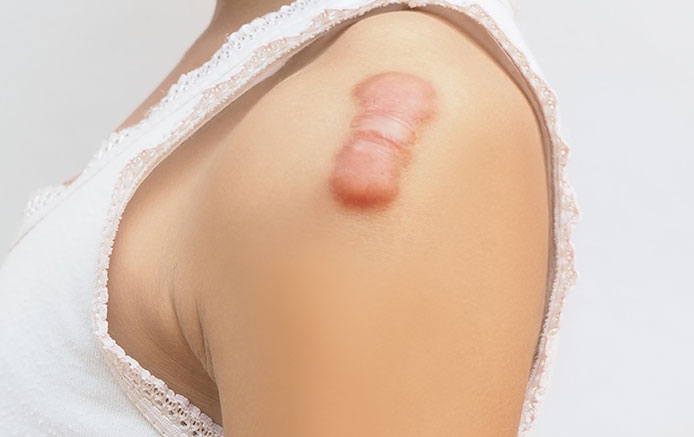
SERVICES
Scarring Deformities
What are scarring deformities?
Scarring is a natural part of the healing process after an injury. There are different types of scars, namely keloid scars, hypertrophic scars, contracture scars and acne scars. The body repairs itself by generating scar tissue when skin is damaged or wounded. Abnormal scarring occurs when the body produces too much scar tissue. Keloid scars and hypertrophic scars are elevated, red fibrous lesions that extend beyond the borders of the initial cut or incision.
Types of scars
Keloid scars
An overly vigorous healing process gives rise to keloid scars. A keloid scar might restrict movement over time. Surgery to remove the scar, steroid injections, or silicone sheets to flatten the scar are all options for treatment. Cryotherapy can be used to treat smaller keloids (freezing therapy using liquid nitrogen). When you are harmed, you can also use pressure treatment or silicone gel pads to avoid keloid formation. People with dark skin are more likely to develop keloid scars.
Contracture scars
You may develop a contracture scar if your skin has been scorched or burnt. These scars tighten the skin, making it difficult to move. Scars from contractures can become more profound, harming muscles and nerves.
Hypertrophic scars
These are elevated, red scars that resemble keloids but do not extend beyond the injury's boundaries. Injections of steroids to alleviate inflammation or silicone sheets to flatten the scar are two options for treatment.
Acne scars
If you have ever had severe acne, you have probably have scars to show for it. Acne scars come in various shapes and sizes, ranging from deep pits to angular or wavelike scars. The type of acne scars you have will determine your treatment options.
How to treat scarring deformities
There are several options available for scar treatment, depending on the type and severity of the scar. Treatments include:
- Corticosteroid injections every six weeks may aid in the flattening and softening of the scar.
- Over-the-counter or prescription creams, ointments and gels.
- Pressure and massage - applying pressure with bandages or tape and regular massage can weaken the scar tissue and improve the scar's look.
- Silicone - to reduce scarring, this non-invasive solution can be applied as a sheet, gel, spray, or foam.
- Laser therapy aims to lighten elevated scars by burning and flattening their red/pink pigments.
- Surgery - an irregular scar can be surgically removed after a year.
Scarring Deformities FAQ:
How long can scars take to heal?
Minor cuts will heal quickly and fade but can also take up to two years to fade. Some scars will take longer to fade than others, depending on the severity of the incident. Genetics, skin type, and how well a lesion is treated will all play a role in whether or not a scar fades over time.
How long is the recovery period for a surgically removed scar?
Recovery can take between one and two weeks.
Are scars usually painful?
Scar tissue is not always uncomfortable in the early stages. This is because nerves and healthy bodily tissues in the area may have been destroyed. However, as nerve endings regenerate, scar tissue may become unpleasant. Scar tissue can sometimes become painful when an inside condition progresses. The severity of the initial wound and its placement on your body can affect the degree of pain you experience.

